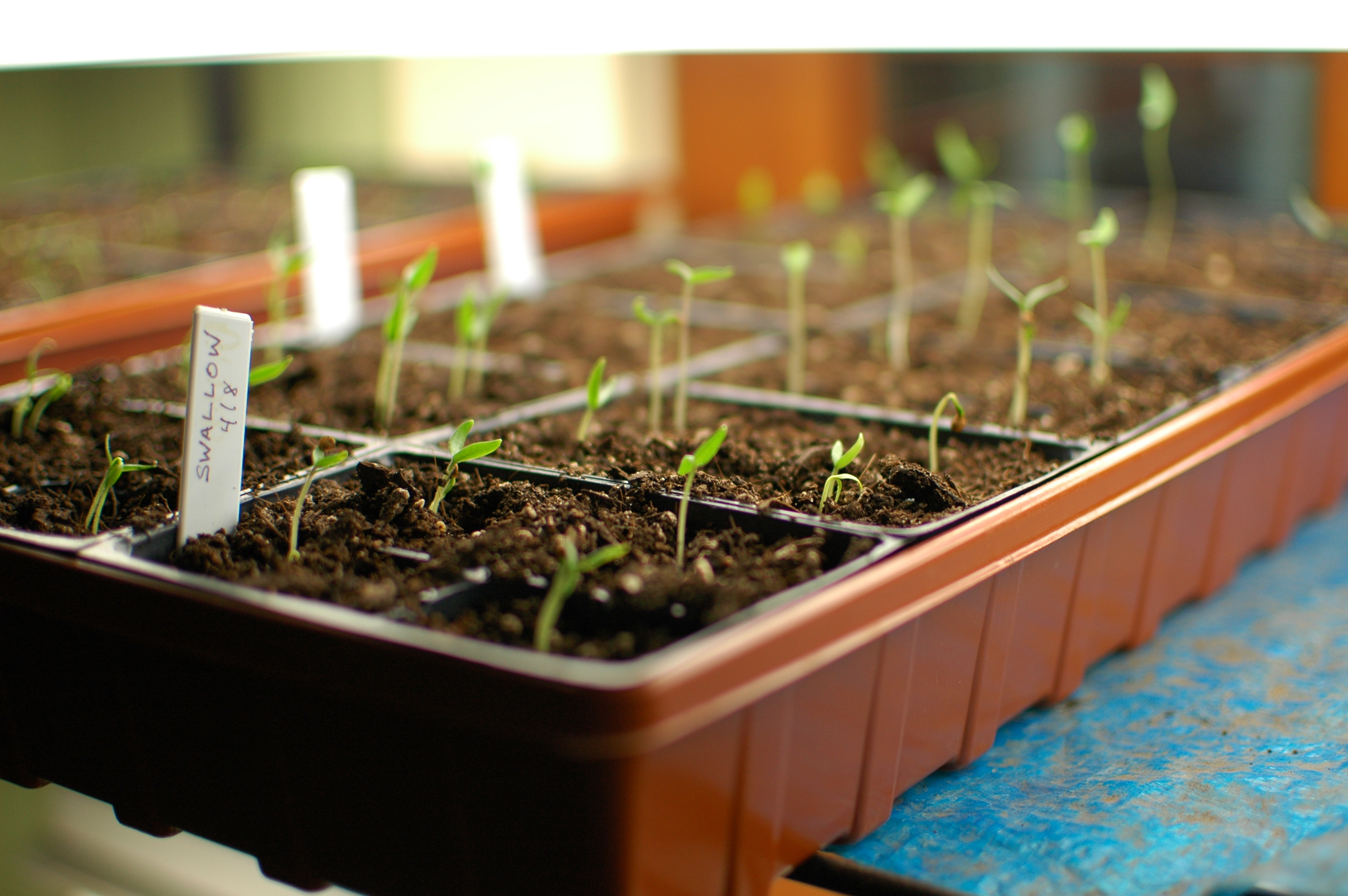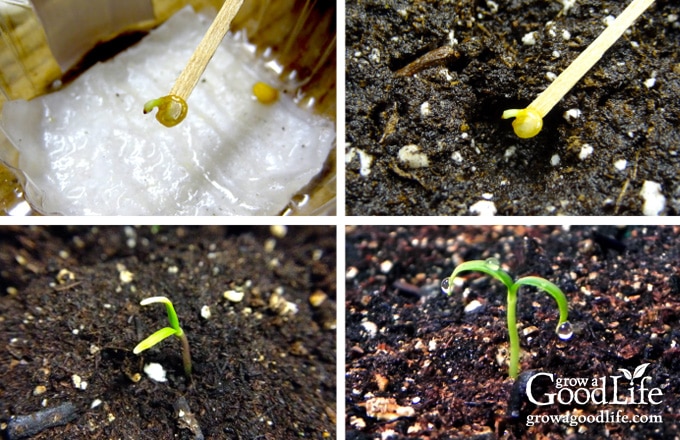To transfer germinated seeds to soil, gently remove the seedling from its container and place it into a hole in the soil. Carefully cover the roots with soil, water the plant, and provide it with adequate sunlight and nutrients for healthy growth.

Credit: www.sunset.com
Starting a garden from seeds can be a rewarding experience, but once your seeds have germinated, the next step is to transfer them to soil. This delicate process requires precision to ensure the successful growth of your seedlings. By following a few simple steps, you can seamlessly transition your germinated seeds into soil, providing them with the ideal environment to develop into strong, robust plants.
From understanding when to transplant to ensuring proper care, this guide will equip you with the knowledge you need to successfully transfer germinated seeds to soil and nurture them into thriving, fruitful plants.
How to Transfer Germinated Seeds to Soil : Step by Step Guide
Preparing The Soil For Transplanting
Choosing the right soil composition
In order to successfully transfer germinated seeds to soil, it is important to choose the right soil composition.
The ideal soil for transplantation should have a well-balanced mix of nutrients, good drainage, and optimal pH
levels. Look for soil that is light, loamy, and rich in organic matter.
Amending the soil with organic matter
Adding organic matter to the soil can greatly improve its fertility and structure. Mix in compost, well-rotted
manure, or other organic materials to enrich the soil before transplantation. This will provide essential
nutrients and promote healthy root development.
Creating a suitable environment for transplantation
When transferring germinated seeds to soil, it is crucial to create a suitable environment. Ensure that the soil
is properly moistened, but not overly waterlogged. Monitor the temperature and provide adequate sunlight or
artificial lighting as needed. Protect the young plants from harsh weather conditions and pests to give them the
best chance of survival.
Germinating Seeds Indoors
Germinating seeds indoors is a great way to get a head start on your garden. Selecting the appropriate seeds is crucial for successful germination. Choose high-quality seeds that suit your gardening goals and climate. Research the specific requirements of each seed type for temperature, light, and moisture.
Provide ideal conditions for germination by creating a warm and moist environment. Use a seed tray or small containers with drainage holes filled with a sterile seed-starting mix. Keep the soil consistently moist but not waterlogged. Place the seed trays in a warm location or use a heating mat to maintain the desired temperature.
Monitor and care for the germinated seeds regularly. Check the moisture levels and ensure they receive adequate light. Use a grow light if necessary and adjust the height to prevent leggy growth. Avoid overwatering, as it can lead to damping-off disease. Once the seedlings have developed a few sets of leaves, they are ready for transplantation into soil.
Transferring germinated seeds to soil requires gentle handling to prevent root damage. Prepare a well-draining soil mix in pots or a garden bed. Make a hole in the soil, gently lift the seedling out of the container, and place it in the hole. Fill the hole with soil, press lightly, and water thoroughly until the soil is evenly moist.
Follow these steps to successfully transition your germinated seeds from indoors to the soil, and enjoy a thriving garden.
Transferring Germinated Seeds To Soil
Transferring germinated seeds to soil is an important step in the gardening process. It ensures that the young seedlings thrive in their new environment. Choosing the right time for transplantation is crucial for the success of this process. Generally, it is recommended to wait until the seedlings have developed strong roots and multiple leaves before moving them to the soil.
Preparing the seedlings for transplanting involves several steps. Start by gently removing them from their current container, being careful not to damage the delicate roots. It is advisable to soak the root ball in water for a few minutes to loosen the soil. Make sure to dig a hole in the new soil that is big enough to accommodate the roots and plant the seedling firmly.
Transplanting the germinated seeds into the soil should be done with care. Ensure that the soil is well-drained and enriched with organic matter to provide the necessary nutrients. Water the newly transplanted seedlings thoroughly after planting to help them settle in their new location. Regularly monitor their growth and provide proper care to ensure healthy development.
Caring For Transplanted Seedlings
Caring for transplanted seedlings involves providing adequate water and drainage, protecting them from extreme weather conditions, and implementing proper nutrient and fertilizer application.
When it comes to water, it is essential to ensure the soil is moist, but not waterlogged. Providing regular watering is crucial, especially during dry spells. However, it’s important to avoid over-watering, as this can lead to root rot.
Drainage is equally important in preventing waterlogging. It’s advisable to use well-draining soil and ensure the pots or containers have proper drainage holes. Additionally, using a layer of gravel or pebbles at the bottom of the container can help improve drainage.
To safeguard transplanted seedlings from extreme weather conditions, providing adequate protection is necessary. This can be achieved by using cloches, row covers, or even creating temporary shade structures.
Implementing proper nutrient and fertilizer application is vital for the healthy growth of transplanted seedlings. Using organic fertilizers or compost can enrich the soil with essential nutrients. However, care should be taken to avoid over-fertilizing, as this can harm the delicate root system.
By following these guidelines for caring for transplanted seedlings, you can ensure their successful growth and development.
Common Challenges And Solutions
Transferring germinated seeds to soil can present various challenges, but there are effective solutions to overcome them. One common challenge is preventing transplant shock, which occurs when the seedlings experience stress during the transition. To prevent this, it is crucial to handle the seedlings delicately, ensuring that the roots are not damaged, and gradually acclimate them to their new environment.
Pest and disease infestations can also hinder the successful transfer of germinated seeds. To address this, inspect the seedlings regularly for any signs of infestation and take immediate action, such as using organic pest control methods or introducing beneficial insects. Additionally, be sure to maintain proper hygiene and provide optimal growing conditions to minimize the risk of pests and diseases.
Another challenge to consider is stunted growth. Factors such as insufficient nutrients, improper watering, or inadequate sunlight can contribute to this issue. To tackle stunted growth, ensure that the seedlings receive adequate nutrients through appropriate fertilization and consider adjusting the watering regimen to meet their specific needs. Providing sufficient sunlight or artificial light sources can also help promote healthy growth.
Frequently Asked Questions For How To Transfer Germinated Seeds To Soil
How Do You Move Germinated Seeds To Soil?
Gently transfer germinated seeds from sprouting medium to soil with care.
When Should You Transfer Germinated Seeds To Soil?
Transfer germinated seeds to soil when they have developed strong roots and sprouts.
How Do You Transplant Seedlings From Paper Towel To Soil?
Transplant seedlings from paper towel to soil by gently placing them in a hole and covering with soil.
When Can I Transplant Seedlings After Germination?
Transplant seedlings after germination when they have at least two sets of true leaves.
Conclusion
To successfully transfer germinated seeds to soil, follow these steps: ensuring the soil is well-prepared, creating a suitable environment, handling the delicate seedlings with care, and providing proper irrigation and sunlight. By adhering to these guidelines, you can maximize the chances of successful seedling transplantation.
Remember to assess the specific needs of each plant species and adjust your approach accordingly. Taking the time to properly transfer germinated seeds ensures they have the best possible start in their new environment, leading to healthy and thriving plants.
With patience and attention to detail, you can create a beautiful garden filled with a variety of vibrant plants. Happy gardening!

